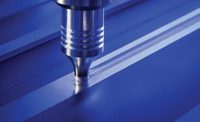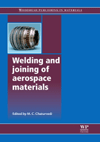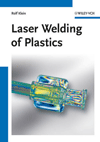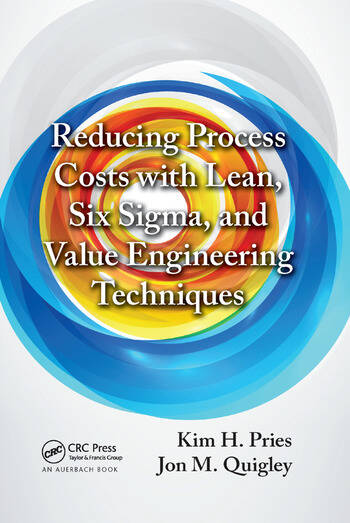To join two aluminum parts, you could, in theory, place one atop the other and wait 100 years. The two will eventually form a solid-state bond. Metals naturally want to join with each other.
This is the basis behind solid-state welding processes, which rely on heat and pressure to join metal parts without melting the materials. At one end of the spectrum is diffusion bonding. Axial force is applied to the parts as they are heated to 50 to 75 percent of their melting temperatures. Over time, atoms in each part intersperse, creating a solid-state bond. There is no relative motion between the parts, but the process can take anywhere from a few minutes to a few hours.
At the other end of the spectrum is friction welding. This method does not require an external heat source. Rather, axial force and either linear or rotary motion is applied to the parts. Friction removes surface oxides and heats the metal at the interface to the plastic state. As the parts begin to upset, the metals share electrons and bond to each other. At that point, the motion stops, additional axial force is applied, and the weld is accomplished. The process takes less time—3 to 18 seconds, depending on part size, materials and level of automation—but it requires a great deal of relative motion between the parts.
In the middle of that continuum is a new technique called low-force friction welding. Developed by engineering services firm EWI of Columbus, OH, and friction welding specialist Manufacturing Technology Inc. of South Bend, IN, low-force friction welding promises faster cycle times, less flash and material consumption, tighter weld tolerances, and more precise orientation of the parts. The equipment is also smaller and less expensive.
“If we use an external heat source to raise the interface temperature, we no longer require high force to generate the friction needed to heat the interface for forging,” explains Dan Adams, president and CEO of Manufacturing Technology. “We are using external heat instead, and only applying a small amount of relative motion to accelerate the process. We’re making a friction weld at a fraction of the force.”
Like conventional friction welding, the new process does not require filler metals, fluxes or shielding gases. It can join both similar and dissimilar metals, and it’s highly repeatable. The process can be used to assemble large parts, such as axles, and small parts, such as engine valves.
A major advantage of low-force friction welding is that it produces little or no flash. Parts joined with conventional friction welding will have flash around the joint circumference. Though flash does not functionally affect the joint, it can be an aesthetic concern. As a result, manufacturers typically opt to remove the flash or design the parts to hide or contain the flash.
That’s not an issue with low-force friction welding. By varying the amount of heat and motion applied to the parts, engineers can limit flash so that little or no post-process machining is necessary.
“With low-force friction welding, you can make very low upset welds—they take on more of a bulge shape, as opposed to the flash curl typically generated by traditional friction welding,” says Adams.
For example, if conventional friction welding is used to join two metal tubes, engineers may need to remove the flash curl on both the outer and inner diameter of the joint. That can be complicated and expensive. With low-force friction welding, the joint might simply be a bulge.
“If you do choose to remove the flash, we can create a flash geometry that’s much easier to remove by manipulating the parameters of preheat, force and relative motion,” says Adams. “This would be especially useful for applications such as drill pipe or hydraulic cylinder rods.”
Less flash is also a benefit when welding blades to discs in aerospace applications. “When you join the blade to the disk with linear friction welding, you are left with a jagged ribbon of flash. The bulky flash reduces tooling space and makes it more difficult to add additional blades—especially the final blade,” explains Adams. “If you use low-force friction welding to join the blades to the disk, you instead get a bulge, which is contained in the weld collar. The bulge is smaller and less obtrusive, making it much easier to machine afterwards. It also frees up space for tooling.”
Low-force friction welding is also faster than conventional friction welding. In certain automotive applications, the process can reduce cycle times by as much as 32 percent.
Finally, the same energy source used to heat the parts prior to welding can also be used to heat-treat the assembly after welding. That can obviate the need for a heat-treating oven further down the production line.





